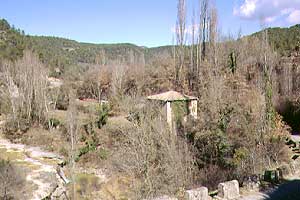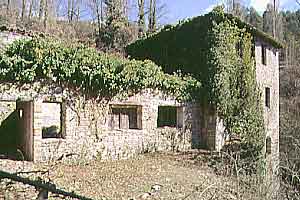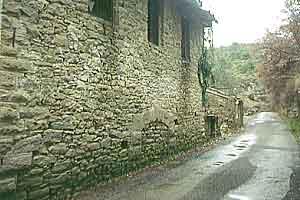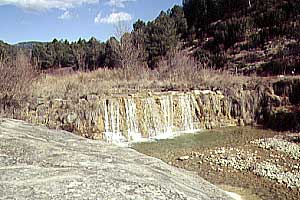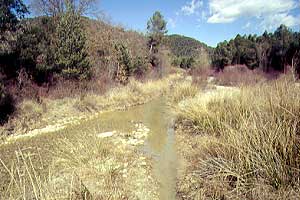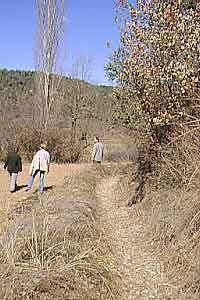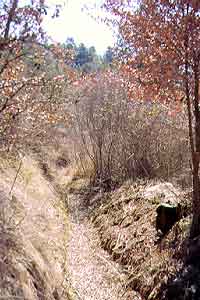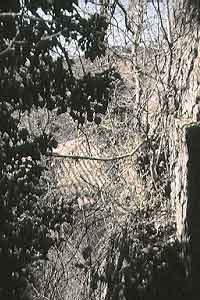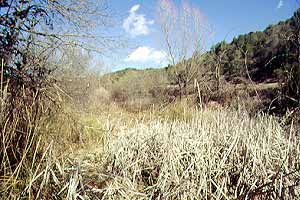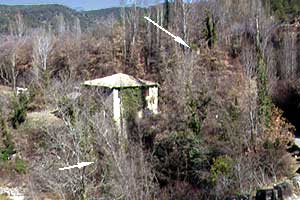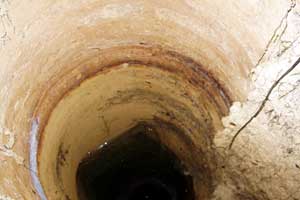Path: Introduction -
Visit the mills; catalogue - Centenera

Mills in Alto Aragón - harinero, aceitero, central eléctrica
Centenera

Centenera is easily reached from
. Leave Graus in northern direction towards and
. Turn right for .
Once there do not enter the village, but continue straight-on towards
and . The construction is next to the road just before you
cross the
Barranco de la Ribera(or
de Pinares). Our latest visit was on invitation of the owners who did quite a good job in removing the luxuriant vegetation, making it a much easier job for us than in 1998.
Pictures: i.1998, 08.iii.2004
